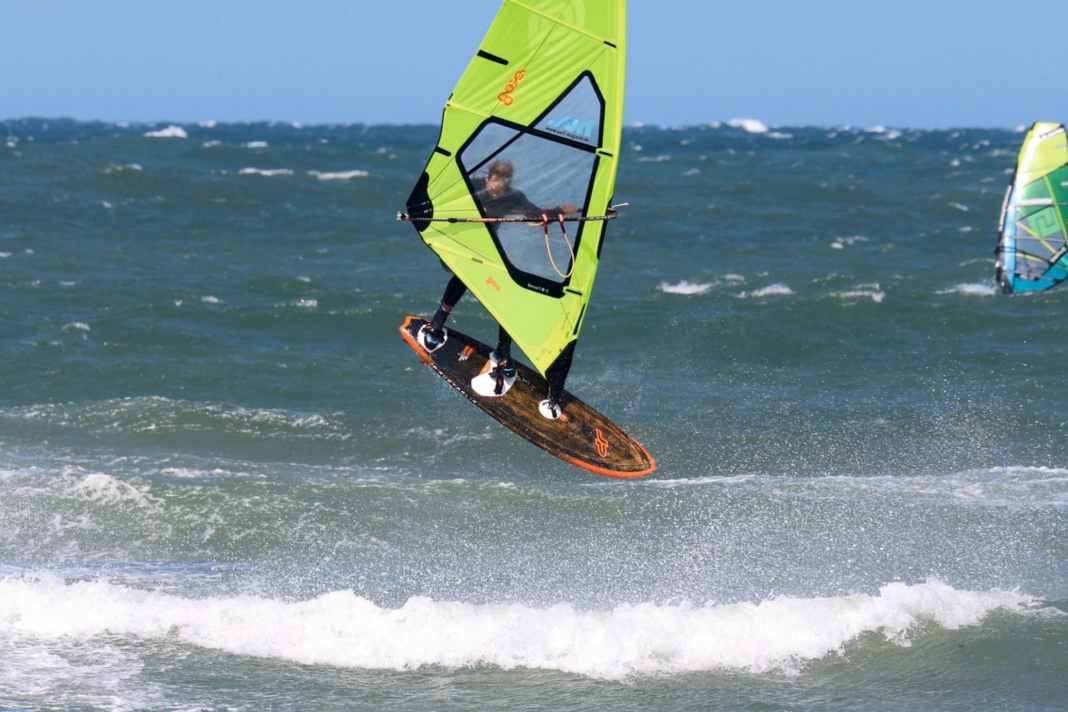Waveboard 2026: JP-Australia Magic Wave - Shaper Werner Gnigler on the new wave all-rounder




Werner, the Magic Wave has always been your all-round wave board. How can you improve an all-rounder without having to make sacrifices in one particular area?
The Magic Wave should still have the widest possible range of use and cover a wide variety of conditions. Because the wave conditions are so varied, it is of course brutally difficult to build a board that can be used everywhere. When developing the Magic Wave, we focussed on building a board for all areas where you have sideshore or sideonshore wind. The Magic Wave is a very fast board, but it is also compact enough to be able to make radical wave moves and rotations on the wave.
What specifically has changed in the shape?
The sizes have been graded differently and the shape has been made a little slimmer, especially in the bow area. The tail is now slightly wider.
How does a wider tail go together with radical turning characteristics?
We have an underwater hull concept with concaves and V. This means that as a shaper I can completely decouple the rocker line on the centre line from the edge shape. In this way, the boards have a straight planing surface, which in combination with the wider tail brings speed and early planing. In the edge area, the board then has a lot of rocker in the rail area due to the alternating use of V and concaves in different areas, which makes it turn tight. In addition, we have moved the straps backwards. This allows you to turn the board tightly and variably despite the wider tail. This is also supported by the optimised positioning of the fins. Another advantage of the new outline is better control in big waves thanks to the slightly parallel lines.
Is the Magic Wave a board for hobby wave surfers, or would you also recommend the board to very experienced wave surfers?
Some of our team riders in the World Cup use the Magic Wave at spots like Tenerife or Sylt. Marino Gil Gherardi has been riding a prototype of the Magic Wave on Gran Canaria for over a year. The Magic Wave is radical enough that even professionals can have fun with it.
Are these boards modified for the pros? Or 1:1 the standard shapes?
Marino rides 100 per cent standard shapes. Our team riders only use different shapes for the World Cup in Maui. This also applies to the construction. Our S-Tec construction is super light and stable, the pros can live with it, and it wouldn't make sense to build special custom boards for our team riders.
Yours S-Tec technology is described as higher quality compared to the current 2025 model. What is behind this?
The basic structure is similar - PVC sandwich material, selective reinforcements made of carbon and glass fibre and so on are applied to the foam core. With the S-Tec construction, we use more high-quality S-glass. We go for a custom look for the finish, which looks classy and saves a lot of weight.
Waveboards need flex! That brings drive and durability!"
Less carbon, more fibreglass - that doesn't necessarily look like an upgrade to outsiders.
In the wave sector, most brands no longer build carbon boards. You never see carbon boards among surfers either. Why? Full carbon boards are often too stiff. In the turn, a board made of S-glass flexes a little more, which gives you drive in the turn. Flex is also not bad for hard landings. Of course, that doesn't mean that we don't use carbon layers in certain areas, for example in the stance area.
You say that the new Magic Wave has become a little more responsive. So who still needs the Ultimate Wave?
There is certainly a certain overlap. Anyone who surfs in real down-the-line conditions from time to time will get a little more turning ability out of the Ultimate. In addition, as a quad, the Ultimate Wave naturally offers that rail-like carving feeling that only quads offer. So it's not so much a question of better or worse, but also a question of taste - wave surfers are always individualists!
In surf 11-12/2025 you can read in the big Wave test how the new JP-Australia Magic Wave compares to the competition!
Technical data JP-Australia Magic Wave 2026
| Size (litres) | Length (cm) | Width (cm) |
| 79 | 221 | 57,5 |
| 85 | 222 | 59,5 |
| 91 | 224 | 61 |
| 99 | 225 | 62,5 |
| 107 | 227 | 63 |

